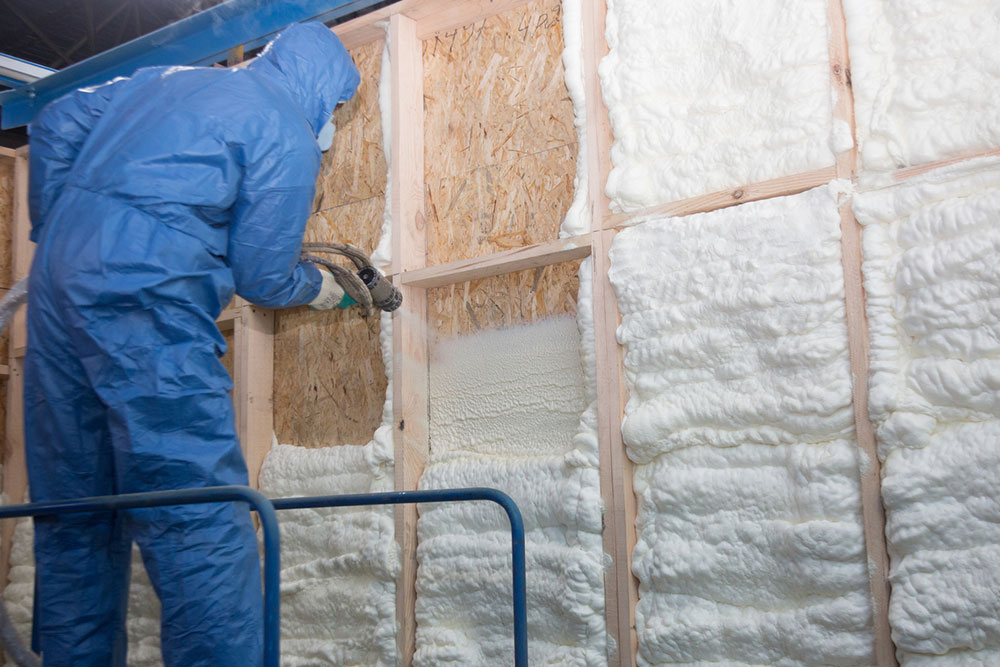3 common spray foam insulation mistakes to avoid

Spray foam is a great way to add insulation to homes, and it is typically a preferred choice of material for many contractors and homeowners. While this is a popular method to insulate spaces, one may make mistakes when applying the product. It takes some practice to understand the best way to insulate the home, but knowing some tips and things to avoid will be helpful for someone considering using this option for their home.
Not considering roof damage
While spray foaming does not lead to any damage to the house’s structure, there can be some risks involved if you are using the closed cell spray foam in rooms close to the roof, like the loft. The closed cell foam is less porous than its open cell counterpart, meaning the foam has no space to dissipate the warmth once it is used. This temperature change leads to the possibility of the roof’s materials contracting and expanding, which can lead to damage. The material can expand when there is too much heat, and when it cools down, the material contracts. This change can create gaps in the roof, leading to damages to the structure.
Insulating too quickly or in thick layers
This situation occurs when the insulating is not done properly. The spray foam needs time to settle down and should not be applied too quickly or in extremely thick layers. This is because the reaction that allows the foam to expand properly is not completed in either situation. When the foam is applied too quickly, the exothermic reaction gets too hot, and the next layer cannot react properly. When the layer is applied too thick, the layer underneath cannot expand properly, which leads to gaps and uneven layering. This uneven reaction leads to the release of gas with an overwhelmingly bad stench that can last for months, even after the installation.
Neglecting mold or mildew
One may prefer a closed cell spray foam for insulation as it provides a much tighter insulation seal and keeps the warmth inside more effectively. However, the issue with this much warmth staying in is that it provides a perfect environment for the microbes, mold, and mildew to grow. This can be an issue, so always speak to the contractor before installation to learn about this limitation and see the best options to overcome it. Some other alternatives suggested are usually fiberglass and fabric insulation; however, in some cases, it is more likely that mildew and mold will appear with such types of installation than with the spray foam.
Other things to know about spray foam insulation
As with any decision, one has various factors to evaluate before picking the type of insulation for their home. When it comes to spray foam insulation, here are some considerations to know about.
You can try opting for open cell spray foam, which keeps the structure of the roof intact. However, it is to be noted that this type of spray foam is not water resistant, so if there is any leak from the roof, the foam will turn mushy, leading to a mess.
It is recommended to get a reliable professional who knows how to handle spray foam and can install it without disrupting its reaction. Fixing the odor issue after installation of the spray foam is tough, and in some cases, the smell can linger for years in the house.
Some options to prevent mildew and mold include DIY recipes like bleach and water solutions. One can also use undiluted white vinegar, which also seems to work and is considered a more eco-friendly option. Also, when getting the installation, always ensure the surface is clean and does not already show any signs of mold or mildew. The signs tend to take just a couple of days to appear; however, they can be easy to miss when it is fresh. So always get the walls tested and do a professional assessment before starting the work. This is also why some people consider using open cell insulation, as it allows the roof to breathe better and does not allow mold development.
Another thing to note is that the spray foam method is not environmentally friendly. So this is something that may not sit well with anyone who is an advocate for the cause. The materials that it is made from is not sustainable and since the product is also made from petroleum-based materials, it may be replaced with technology that does not use fossil fuels in the future. There is no scope for recycling when it comes to spray foam because of the way it clings to the roof and, hence, breaks down when removed. Spray foams also contain chemicals like methane and hydrofluorocarbons, which are environmental hazards.
One must keep these considerations in mind before speaking to a contractor about this form of insulation. The pricing may vary according to the size and also the type of spray foam being used. So be thorough with the research and make sure to compare costs in the area.


